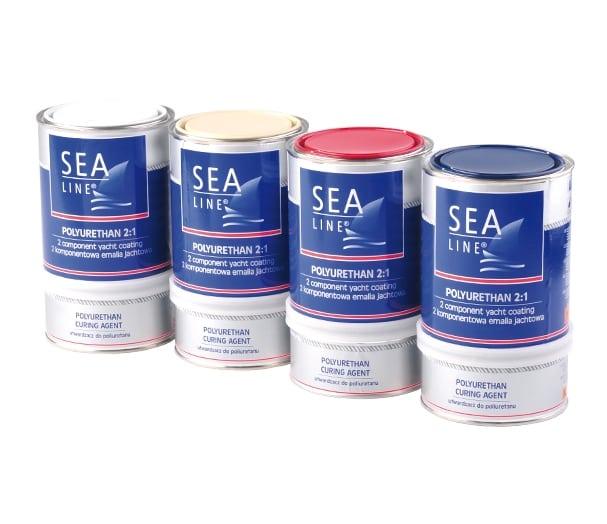How to paint interior doors?
Interior doors are an important interior element. They not only delimit space and protect rooms from noise, odors, drafts and dust, but also emphasize their specific style, giving completeness and transforming the atmosphere as a whole. Therefore, if interior doors have lost their original appearance over time, then they must be put in order. Otherwise, even the most luxurious repair against their background will look unpresentable. And painting interior doors will help in this.

Compared to the complete replacement of the door leaf, this event, which you can easily handle with your own hands, is quite inexpensive. And the result with the help of it can be achieved no worse if you do everything right and give free rein to your imagination a little. So, how to paint interior doors, what is needed for this and what color to choose for them? In all this further and we will understand.
Choosing a shade for an interior door
The interior is considered ideal when all its elements, including interior doors, are harmoniously matched to each other. Moreover, there is an important principle in design - in terms of color, all doors should preferably be identical, which creates a single holistic picture in the house.
But, since different rooms are often decorated in it in separate stylistic and color directions, then, at first glance, it can be difficult to immediately find the “golden mean” in the shade of interior doors. In these difficult cases, designers often focus on the colors of the main premises of the home:

- hallways;
- halls;
- living rooms.
And when this does not help, then the interior doors of all rooms outside (relative to the corridor) can be painted in one color, and from the inside of a separate room - in another. Also, to make the task easier, when choosing the tone of interior doors, designers advise paying attention to many details directly in each room:
- walls;
- ceiling;
- floors;
- plinth;
- furniture;
- decor items, including textiles.

For example, if the floors repeat the color and texture of wood, then they can be painted in identical shades. In general, it is believed that natural wood colors are a universal solution for interior doors, since in this case they fit perfectly into almost any design, harmonizing perfectly with the floor, furniture, and decor items.
For people who prefer bold solutions and originality, the color of such products can be matched to the design of the walls. At the same time, it is better to make the shade of the doors a tone higher or lower - this will visually highlight them. As for light and dark variations, in the first case, interior doors will visually expand the premises, creating a laconic light atmosphere in them, and in the second case, they will make the space more strict and restrained.

Choosing the type of coloring composition
All paints can be conditionally divided into transparent and pigmenting compositions. The first includes varnishes, which are more suitable if the wooden doors do not have serious defects and they are planned to simply be refreshed without changing color. But, since these interior elements are functional structures that are in constant operation, due to this, noticeable chips, cracks and other flaws very often appear on them, spoiling the appearance.
Therefore, often for a high-quality restoration of the door leaf, an elementary varnish coating is not enough. For this purpose, it is desirable to use pigmented paints that can mask and eliminate more serious defects.
In addition to color, paints differ in their composition. The choice of their type for this parameter will directly depend on what interior doors are made of. Paying attention to the table below, you can understand in which cases it is better to use one or another type of coating composition.

| The material from which the interior door is made | Recommended paint type |
|---|---|
| array | Completely wooden products can be painted with almost any paint. For example, all products based on oils and alkyd enamel have proven themselves well in this case. These materials have a wide range of colors and after drying form a resistant, durable coating. They have practically no drawbacks, except for the strong smell that is felt in the room for 3-4 days after painting the canvases. When there is a restoration of interior doors with your own hands in a house where there are children, of course, it is better to use acrylic enamel. It is odorless, non-toxic and dries quickly. But its main drawback is its fragile and short-lived surface. |
| MDF | It is advisable to paint MDF doors with compositions that simultaneously include tone and varnish (colored varnishes). Such paints help to preserve the texture of the material on such canvases and mask any existing defects. |
| Veneer | For veneered interior doors, it is highly not recommended to use nitro-paints, since this composite material does not tolerate moisture. After applying such compounds, ugly spots may form on them. Veneer doors are best painted with polyurethane or glyptal compounds. They do not have a strong smell, so they are comfortable to work with. As for the choice of color, then according to this parameter they can be selected for every taste. |
| By inherent characteristics | Anticorrosive, moisture resistant, heat-protective, antiseptic. |
| By place of application | Universal or separately for outdoor and indoor use. |

Whatever paint is chosen, in any case, it should be intended for interior work. Moreover, if there is strong moisture in the room where the interior door is located (kitchen, bathroom), then the compositions will certainly be selected with moisture-resistant qualities.
Coloring technology
In addition to acquiring paint, for the restoration of interior doors, you will need to prepare such a tool and additional building materials as:
- sandpaper of medium and fine grit;
- putty on wood;
- solution for removing the old coating (20% technical carbolic acid, caustic potash or sodium);
- sponge;
- putty knife;
- cotton swabs;
- primer;
- construction tape;
- flat brushes of various widths;
- roller;
- container for paint;
- stairs;
- screwdriver

After that, you can proceed to the preparatory work so that the door is suitable for paint. This stage consists of the following steps:

After completion of the preparatory work, the door leaf should be completely ready for painting. This process itself includes the following steps:

Finally, it should be noted that do-it-yourself painting of interior doors should be carried out in rooms with closed windows, where there are no drafts and dust. If everything is done as described above, then the doors in the house will again look like new. At the same time, their owner will not spend a lot of money either on the masters or on the paint itself, because the cost of these compositions of any type is now available to everyone.
